14s Novice Greek

How do seismometers measure vertical ground motion?
Animation of the principles of a drum-style vertical seismograph station that records up-and-down movement. Seismographs are designed so that slight earth vibrations move the instrument. The suspended mass remains at rest as the spring absorbs some of the motion. The stylus (pen) affixed to the mass, records the relative motion between itself and the rest of the instrument, thus recording the ground motion. Animation shows compressive behavior of the P wave in the direction the wave is traveling and the shearing behavior of the S wave perpendicular to the direction of wave travel. Although the arrow shows gross movement, remember that this happens on a microscopic scale in the Earth.
Click "Animations" tab above to see a Horizontal Seismograph animated
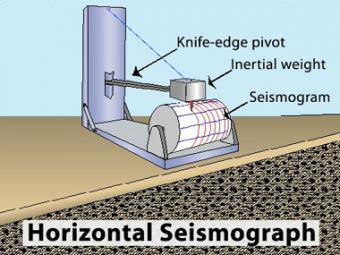
Animation of the principles of a drum-style horizontal seismograph station that records back- and-forth (N-S, E-W) movement.
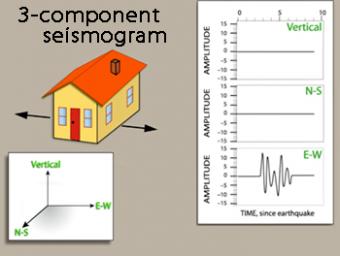
We use exaggerated motion of a building (seismic station) to show how the ground moves during an earthquake, and why it is important to measure seismic waves using 3 components: vertical, N-S, and E-W. Before showing an actual distant earthquake, we break down the three axes of movement to clarify the 3 seismograms.

We use exaggerated motion of a building (seismic station) to show how the ground moves during an earthquake, and why it is important to measure seismic waves using 3 components: vertical, N-S, and E-W. Before showing an actual distant earthquake, we break down the three axes of movement to clarify the 3 seismograms.
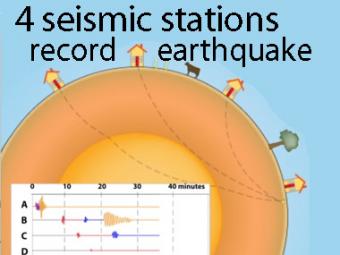
A cow and a tree in this narrated cartoon for fun and to emphasize that seismic waves traveling away from an earthquake occur everywhere, not just at seismic stations A, B, C, and D. A person would feel a large earthquake only at station A near the epicenter. Stations B, C, D, and the cow are too far from the earthquake to feel the seismic waves though sensitive equipment records their arrival.
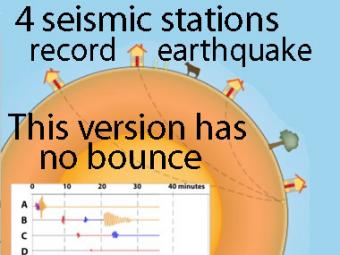
This companion to the animation "Four-Station Seismograph network" shows the arrival of seismic waves through select wave paths through the Earth (P and S waves) and over the surface of the Earth. The movement at distant stations occurs at a microscopic scale. While that doesn't result in noticeable movements of the buildings, the arrivals are recorded on sensitive seismometers.
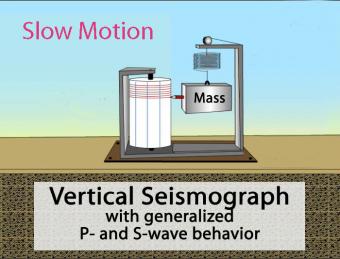
Animation of the principles of a drum-style vertical seismograph station that records up-and-down movement.
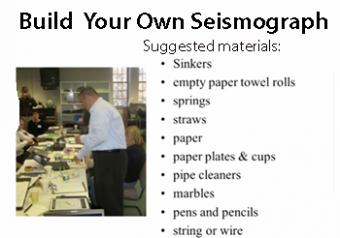
Working in small groups of 3-4, students design and construct a seismograph using common household and craft materials provided. Students will demonstrate to the class (by shaking their table) how their seismographs records ground motion and if possible, the time of the disturbance occured.
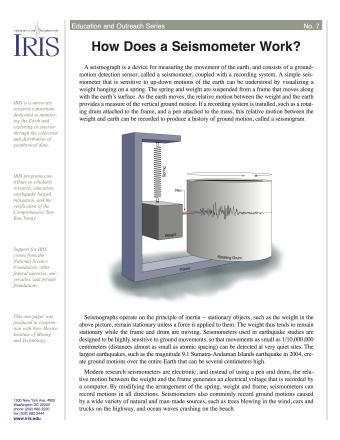
A seismograph is a device for measuring the movement of the earth, and consists of a ground-motion detection sensor, called a seismometer, coupled with a recording system. This fact sheet provides an overview of the basic components of a seismometer and physical science principles behind its operation.
NOTE: Out of Stock; self-printing only.
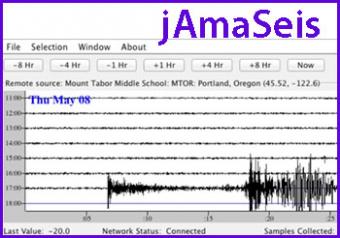
jAmaSeis is a free, java-based program that allows users to obtain and display seismic data in real-time from either a local instrument or from remote stations.